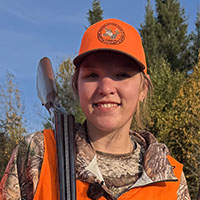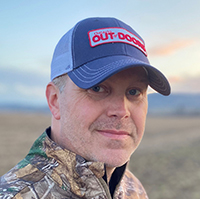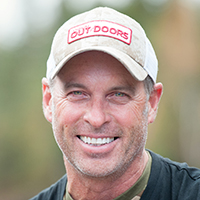I’ve lost track of how many times I’ve encountered big bucks while walking or paddling to a duck blind. Mature bucks make swampy ground, wetlands, spruce bogs, and marshes their home year-round. This tricky terrain makes for a challenging hunt, but there’s good reason to go low for tall tines if there are wetlands in your area. Big, black-footed bucks will not venture into the hardwoods and fields until after legal hunting hours. It’s often just the two- and three-year-old bucks that run around out in the open in daylight looking for does. It is rare to see a mature buck cruising for does during the rut in daylight. It’s more likely does have gravitated toward secluded swamps for breeding or been pushed there by bucks. That is where they will be active throughout the day, allowing you to lay an ambush or call a buck in. Feeling out a marsh You can’t just slosh through wetlands and hope to get a shot at a bounding buck. A successful hunt depends on off-season scouting. Late winter scouting will reveal rubs — the trails that deer use to enter and leave a swamp — and the little hummocks and islands they use for bedding. Right at the end of deer season is ideal. Be cautious in the winter, because heat generated by rotting vegetation under the water slows down the freezing process, and the water can be deeper because of fall rains. Deer trails in cattails and swamp grass are visible on satellite imaging, as is the high and dry ground that bucks bed in. High ground can be identified by trees and bushes that can’t grow in waterlogged soil. A buck will take the route with the shallowest water from the forest edge to his high ground bedding area. If the water is all the same depth, it will take the most direct route. Beaver dams are natural funnel points for deer, as are fingers of dry ground reaching into a swamp or a chain of hummocks or islands. Check out these land formations to find its route, then form your plan. General tactics The first day of the gun hunt: The simplest plan is to set up downwind of a trail at the swamp edge on opening morning of gun season. The massive human intrusion into the world of the deer on opening day drives many deer into wetland
Please log into your OFAH Community account to access this content. Not an OFAH member or Ontario OUT of DOORS Subscriber? Follow the links below to join or subscribe and gain access to exclusive online content.





Contact Information
PO Box 2800 / 4601 Guthrie Dr.
Peterborough, Ontario Canada K9J 8L5
Phone: 705-748-OFAH (6324)
Fax: 705-748-9577
Join Our Newsletter
Watch
Shop
Follow